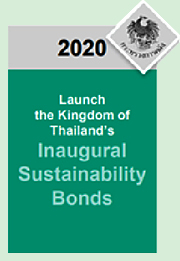Welcome! AsianBondsOnline is a one-stop source of information on bond markets in emerging East Asia.
The process of issuing a green bond can help the financing function of the issuing organization and enable senior management to think more actively about how sustainability relates to their business and operations.
Issuers have access to new investors and a wider range of investors if they can label their bond as green. Deeper investor engagement is also a key benefit for green bond issuers, creating more enduring investor relationships.
For many issuers, there is a benefit in terms of pricing for their green bond compared to other bonds that are not labeled. This price differential, which is often called a “greenium,” is usually driven by the large demand for green bonds compared to the emerging supply.
All of these benefits depend on having a green bond offering that has high integrity. This is demonstrated by achieving some form of recognition or certification for the green label.
Some issuers of labeled bonds have found that if the label is not appropriate, then it creates a negative outcome compared to offering an unlabeled bond.
Investor and Market Expectations
As green bond markets have grown and attracted increased attention, there is more mainstreaming of investors who buy into these instruments. While a certain group of investors are those with green mandates and environmental, social, and governance investing activities, there is also increasing uptake by so-called “vanilla investors.”
Large pension funds and asset managers are increasingly looking for sustainability and low-carbon investments; often, these green bonds are exactly what they are looking for.
“Mrs. Patricia Mongkhonvanit, Director-General, Public Debt Management Office (PDMO) announced that on the 13th of August 2020, book building was held for the Kingdom of Thailand (KOT)’s inaugural sustainability bond issuance, which is first of its kind in ASEAN.
The groundbreaking transaction was highly successful with exceptionally strong demand from th e investors with amount submitted totaling at 60,911 million THB, 3.05 times the announced offering and attracted an interest rate of 1.585% which is lower than the market yield of the existing 15 yr benchmark bond.
Moreover, the sustainability bond attracted a diversified group of investors including banks, asset management companies, financial institutions, insurance companies and offshore investors”

There are substantial climate change risks to insurers, and they are becoming increasingly aware of this long-term challenge. Raising the amount of low-carbon investments in their portfolio is part of that long-term risk mitigation.
Investors, stock exchanges, index providers, and other market participants also consider green bonds against their own environmental assessment standards and investment criteria that may set target thresholds for energy efficiency improvements and include broader environmental, social, and governance requirements.
Some of these market participants and stakeholders exclude bonds funding fossil-fuel-related projects, while others may, for instance, include energy efficiency investments that do not facilitate a long-term lock-in of high-carbon infrastructure.
International versus Regional versus National Approaches
There are different approaches to gaining recognition or certification of a green bond. This situation is evolving quickly as the market grows and covers a wider variety of sectors and jurisdictions.
More and more regional and national approaches are being defined by governments and regulators. This is a sign that many see great potential in green bonds as a way to drive improved climate outcomes in their own jurisdictions as well as on the international stage.
International best practices, such as certification under the Climate Bonds Standard, will always be well received by investors and market commentators. However, demand for green bonds is so strong that less stringent approaches, such as alignment with the Green Bond Principles, will be sufficient for most potential investors.

Pathways for Recognition
There are a number of different pathways for recognition for a green bond label. Each of them have specific requirements, but all of them are based on the platform provided by the Green Bond Principles.
The recognition of the green label can come in different forms:
- alignment with Green Bond Principles,
- conformance with Association of Southeast Asian Nations Green Bond Standard,
- certification under the Climate Bonds Standard, and
- alignment with specific national guidelines or listing requirements.

Key Decision Points
Selecting which is the most appropriate pathway for recognition of a particular green bond and green bond issuer is based on a number of key considerations:
- Where the bond is being issued: Are there local or regional regulations or guidelines for green labeling in the jurisdiction where the bond is being issued?
- Where the projects and assets are located: Are there specific requirements for green projects in that jurisdiction?
- Type of investor being targeted: What sort of recognition is preferred by the targeted investors? Do they have smoother due diligence processes for certified offerings?
- Currency of the issuance: Is the issuance in local currency or a G3 currency such as United States dollars, euros, or Japanese yen? If the issuance is in local currency, are international investors likely to participate?
- Types of green projects and assets associated with the bond: Are there criteria or thresholds for the projects and assets? What effort is required by the issuer to meet the criteria or thresholds?
The most appropriate recognition or certification for a green bond depends on how well the green label is received by the potential investors in the green bond. The green label is a marketing tool; therefore, it comes down to what label the customers accept, respect, and desire.
Issuers should discuss these preferences with their existing investors and other advisers to get early guidance on what they should do, and not do, in seeking recognition for their green label.











